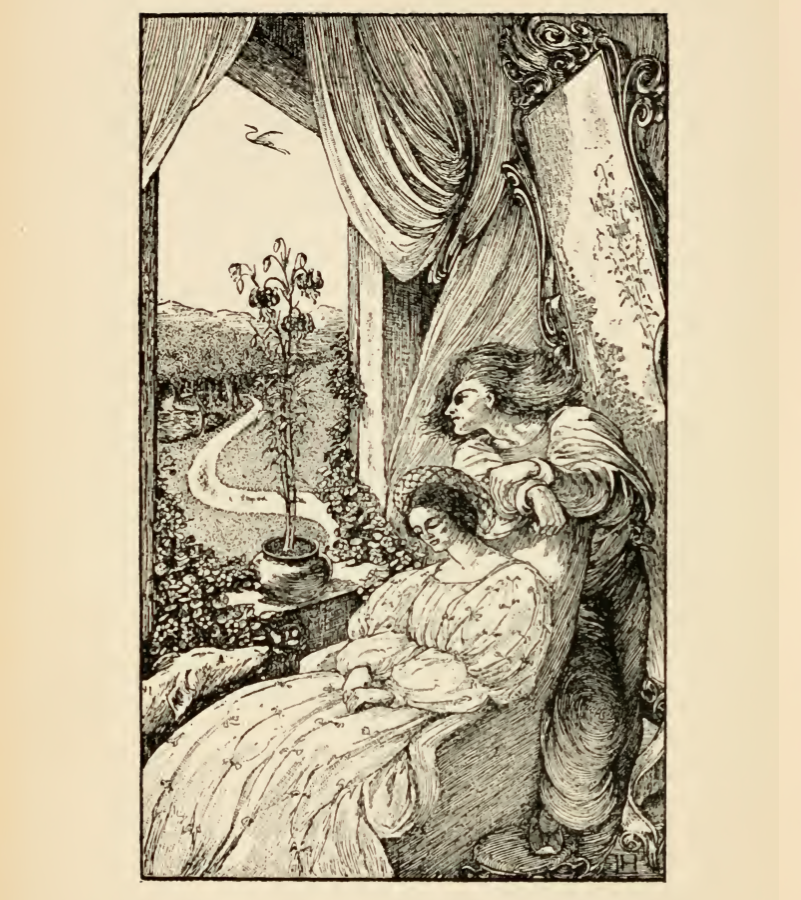“The Story of the Herons" is the fourth framed inset illustration found on page 50 in Laurence Housman's House of Joy. The illustration is wood engraved and proleptic in nature (predictive of the story's events). As Housman was inspired by the art from the Pre-Raphaelites, they were known to encompass the entirety of stories usually within a single illustration, saving room for artistic and interpretive liberties.
Keeping that in mind, the princess sits with her eyes closed in a billowing gown, insinuating the curse that had been placed on her since birth from the Evil Fairy. Most significantly is the man standing behind her that stares out the window to a heron flying in the sky. This depicts the duality of both characters—Prince Heron when he’d been transformed to a human, and the ability that both prince and princess can transform back into herons. Transformation and crossing boundaries is a common motif through the story and its illustration. By infusing different elements of the story into one illustration, it aids in further prompting this fluidity and blurring of lines or boundaries—the way in which humans can turn into birds and back again and having human children with birdlike traits. Housman skillfully places these motifs in an illustration prior to the text that forces the reader to investigate and examine the relevance of each detail—enriching meaning of the fairytale that he leaves to interpretation. Referring back to the illustration after reading the entirety of the fairytale provides a new insights and ideas to something that has already been “defined”, further supporting this notion of fluidity and meaning-making.
Additionally, Housman was a known activist—his intentions and beliefs would colour the fairytale with a moral of some sort, despite not blatantly telling one. By retelling his story through merging various elements of it into his engraving, this echoes into his desire to see England and the people within it to do the same. He brings attention to being able to join together (in this specific case, through matrimony for Prince Heron and the princess) and set aside differences to create something new. There is choice and liberation involved with the princess and prince’s actions—she chooses to remain with his heron form in the pond and the prince chooses to become a bird once again.
Principle Source(s): Housman on Pre-Raphaelite Illustration |Housman and Feminism in the 1890s | Kooistra, Lorraine Janzen. “Wilde’s Legacy: Fairy Tales, Laurence Housman, and the Expression of ‘Beautiful Untrue Things’.” Oscar Wilde and the Cultures of Childhood, Palgrave Macmillan, 2017, pp. 98-105.


